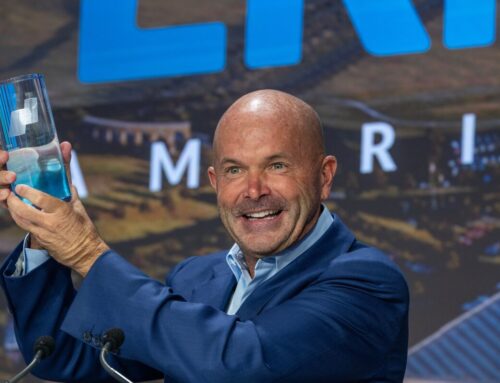Investing in Research and Welcoming Global Talent Strengthens America
June 4, 2025
We live in an era where political opinions often divide us. But certain values transcend partisanship—values like progress, innovation and opportunity. Supporting scientific research and embracing the global talent that fuel our discoveries should be something all Americans can rally behind.
That’s why recent decisions to reduce funding for health and science research, and to limit the participation of international students and researchers, are so concerning. These moves risk stalling the very progress that has long made America a global leader in innovation and medical breakthroughs. This issue is especially meaningful to me, as I came to the U.S. as a foreign student and became a naturalized American citizen, allowing me to contribute my expertise to advancing our country’s biopharma industry.
America’s strength lies in its ability to attract the brightest minds from all over the world. Our universities have served as hubs of discovery, collaboration and global exchange. For decades, they’ve welcomed researchers and students—regardless of where they were born—because the pursuit of knowledge knows no borders.
Unfortunately, that open-door policy has faced new challenges in recent years. Stricter immigration policies and visa restrictions have made it harder for international scholars to contribute their talents here. An Inside Higher Ed article highlighted the issue. It noted that William Brustein, former vice president for global strategy and international affairs at West Virginia University and a veteran of the international student recruitment sector, expects the international enrollment backslide will be much worse during this presidential term than it was in 2017.
Some colleges are already beginning to feel the pinch of new and proposed policies from President Donald Trump’s administration.
“In an unprecedented move, the Department of Homeland Security in April threatened to remove Harvard University’s ability to enroll any foreign students – a tactic other colleges worry could be used on them, too,” noted a May 15 USA Today article.
Suzanne Ortega, president of the Council of Graduate Schools, told the newspaper if that happened at Harvard, the consequences elsewhere would be devastating.
“The bottom line is students have choices of where to go, and if they choose to go to other nations that appear to be more welcoming, those nations’ gains will be the U.S.’s loss,” she said.
Some international scholars are choosing to study, and work, in countries like Canada, the U.K. or Australia—nations that recognize the value of global collaboration in science. Indian students are among those looking at places other than the U.S. for their studies, according to a March 25 U.S. News & World Report article. Clay Harmon, executive director of AIRC, an organization focused on recruiting foreign students, told the publication that during a recent trip to India, the consensus among recruiting agencies was that far fewer of that country’s students are interested in American colleges than in recent years.
The impact of international scholars choosing to study and work in countries other than the U.S. is real. We’re seeing fewer international researchers in our labs and fewer breakthrough discoveries. Meanwhile, critical federal research funding has also been slashed—particularly at agencies like the Department of Health and Human Services. For example, on April 27, 60 Minutes reported that since Jan. 1, 1,300 National Institutes of Health (NIH) employees have been fired and more than $2 billion in research grants cancelled.
Francis Collins, former NIH director, highlighted the agency’s importance to medical breakthroughs during his 60 Minutes interview.
“Deaths from heart disease are down by 75% in the last 40 years,” he said. “That’s NIH. Deaths from stroke are down about 75%. That’s NIH. HIV, AIDS. Where that was a death sentence, now if you have access to those antiretrovirals, NIH and drug companies came up with that, you have a normal lifespan.”
While it’s easy to dismiss scientific grants as government “waste,” the reality is that these projects save lives. They lead to life-changing medications, treatments and technologies. Our response to COVID-19 reminded us of how vital scientific readiness is. With an aging population and evolving health threats, the need for bold medical research is only increasing.
Research isn’t glamorous. It’s hard, repetitive and often thankless work. I know this firsthand. As a graduate student at Oklahoma State University, I worked countless hours in a lab as a research assistant. That experience became the foundation for creating Tetracyte, a breakthrough wound-care treatment that’s now helping thousands of people.
But here’s something I observed during my time at the university: very few American students were pursuing research roles. A 2024 report from the Institute of International Education supports this finding, noting that international students make up about 6% of the total U.S. higher education population. As the USA Today article noted, those students play an outsized role in supporting schools’ teaching, research and budgets.
When I was in college several decades ago, most of my classmates were international students, particularly from Asia. These students were brilliant, dedicated and eager to solve big problems. Without them, our research efforts would have stalled. They were—and are—essential to our progress.
If we want to remain a world leader in medicine, technology and innovation, we must invest in our research institutions, restore funding and reopen the doors to international scientists. This is not about politics. It’s about our future.
By supporting science and welcoming global talent, we build a stronger, smarter and healthier America—together.
Search
RECENT PRESS RELEASES
Related Post



